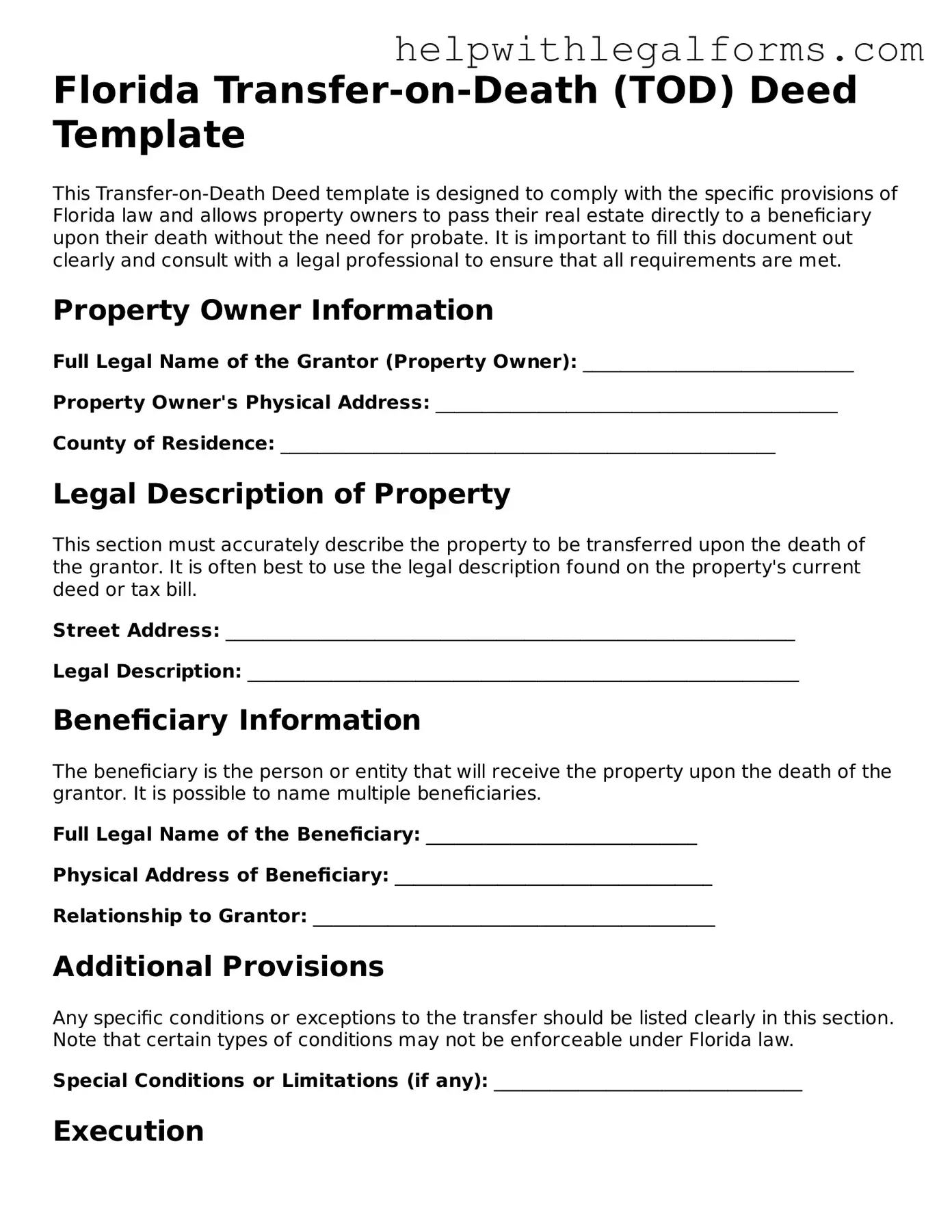Florida Transfer-on-Death (TOD) Deed Template
This Transfer-on-Death Deed template is designed to comply with the specific provisions of Florida law and allows property owners to pass their real estate directly to a beneficiary upon their death without the need for probate. It is important to fill this document out clearly and consult with a legal professional to ensure that all requirements are met.
Property Owner Information
Full Legal Name of the Grantor (Property Owner): _____________________________
Property Owner's Physical Address: ___________________________________________
County of Residence: _____________________________________________________
Legal Description of Property
This section must accurately describe the property to be transferred upon the death of the grantor. It is often best to use the legal description found on the property's current deed or tax bill.
Street Address: _____________________________________________________________
Legal Description: ___________________________________________________________
Beneficiary Information
The beneficiary is the person or entity that will receive the property upon the death of the grantor. It is possible to name multiple beneficiaries.
Full Legal Name of the Beneficiary: _____________________________
Physical Address of Beneficiary: __________________________________
Relationship to Grantor: ___________________________________________
Additional Provisions
Any specific conditions or exceptions to the transfer should be listed clearly in this section. Note that certain types of conditions may not be enforceable under Florida law.
Special Conditions or Limitations (if any): _________________________________
Execution
To be legally valid, this deed must be signed by the grantor in the presence of two witnesses and a notary public. The deed should then be recorded with the county recorder’s office in the county where the property is located.
Date: _______________
Grantor's Signature: ________________________________________
Print Name: ________________________________________________
Witness #1 Signature: _______________________________________
Print Name: ________________________________________________
Witness #2 Signature: _______________________________________
Print Name: ________________________________________________
Notary Public Signature: ____________________________________
Print Name: ______________________ Notary Public, State of Florida
Commission Number: _________________________________________
This document was acknowledged before me on (date) ______________ by (name of grantor) _________________________________________, who is personally known to me or has produced _____________________________ as identification.
Instructions for Recording
After the execution of this deed, it must be recorded with the county recorder’s office to be effective. The grantor or beneficiary should bring or send the original signed document along with any required recording fee to:
County Recorder’s Office
Address: __________________________________________________
Recording this document as soon as possible after execution is crucial for ensuring the transfer of property is recognized under Florida law.
